
The first mass-produced processor with a transistor density reaching 1 million. Its appearance changed the idea of computer performance forever. Darren Yates talks about the legendary Intel processor and its history.
The PC CPU market today is a well-tuned machine for manufacturing and distribution. These processes are improved annually and are comparable to the clockwork. Indeed, any postponement of the release date is guaranteed to be news.
However, let's fast forward to 1989, when, after four years of waiting, Intel finally releases one of its most significant processor models. It is the first mass-produced CPU to hit the 1 million transistor mark, and the first chip with an integrated floating point unit (FPU). Subsequently, it will become one of the first microprocessors with x86 architecture to break the 100 MHz barrier. It also has one of the fiercest technology patent battles in history. This is an Intel 80486 processor.
Need for Speed
By the late 1980s, IBM's ideas for the development of the "personal computer" were confirmed. The combination of software and hardware with IBM-compatible components has become increasingly common in the PC market. This combination has dealt a devastating blow to 8-bit home computers.
Released in 1985, Intel's 80386 processors were also a resounding success, not least thanks to the newly launched PC brand, Compaq. With the release of the first PC in 1981, IBM could become the center of gravity for electronic computers. However, the arrival of the Deskpro 386, Compaq's first 80386-based computer, signaled a change in leadership in the PC market. For the first time, a chip had 32-bit data processing, and that could propel the entire industry 20 years forward. But, despite this success, he was still far from the architecture that we know today. The number of operations per second in the 80386th increased by 50% compared to the 80286th (0.33 vs. 0.21). But since it did not have a coprocessor and built-in cache memory, and the demand for performance increases was growing,the 386, with its 275,000 transistors, had nothing more to offer.
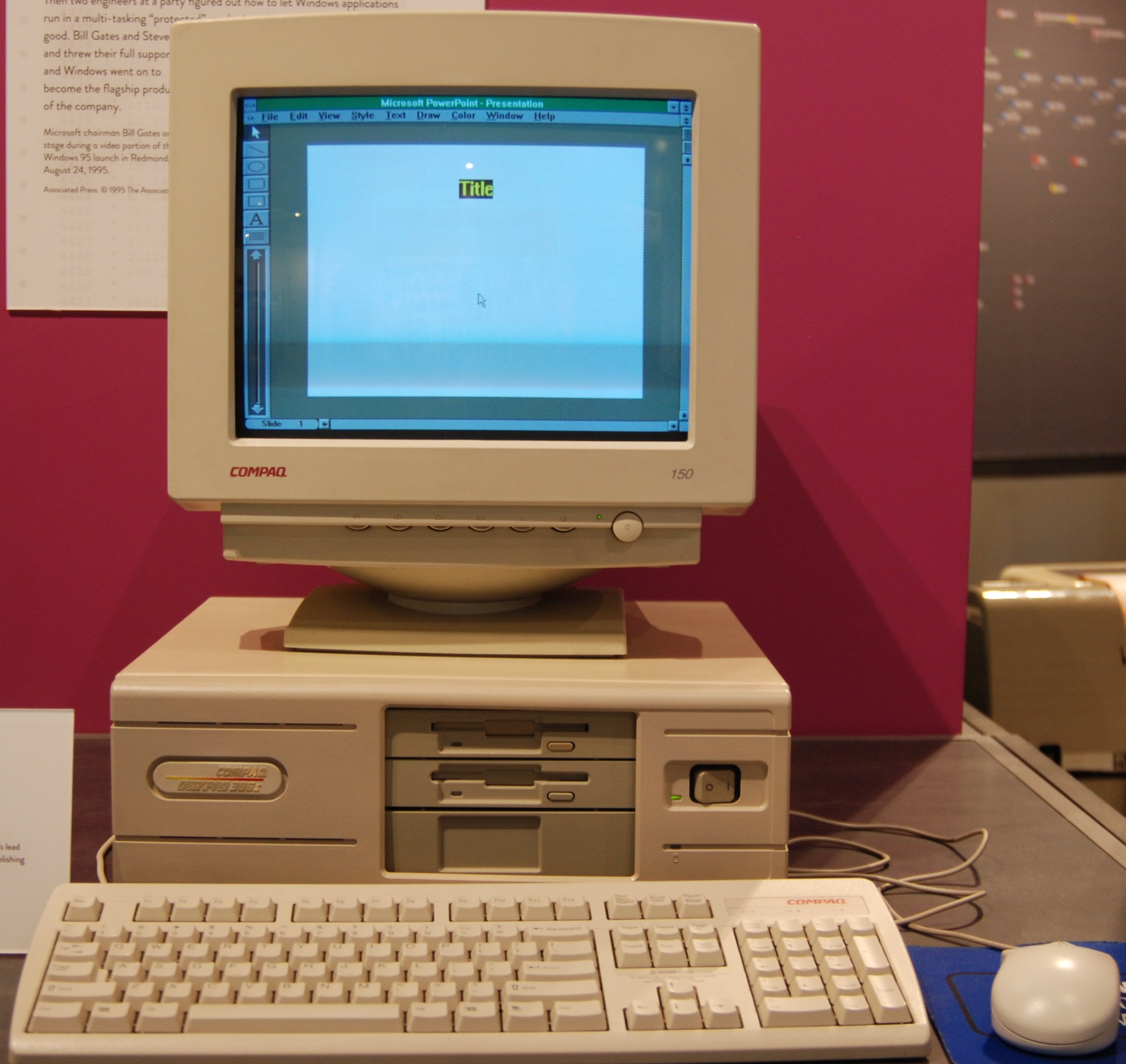
Compaq Deskpro 386 — , IBM
The 80486th processor, released in 1989, received a slightly improved instruction set. Its main distinguishing feature was its breakthrough speed for that time. In performance tests at a relatively moderate 25 MHz, it outperformed the 80386 processor overclocked to 33 MHz. Thanks to the introduction of the L1 cache (modest 8 KB) and the onboard FPU, the average number of operations per second on the 80486 has more than doubled and peaked at 1 MIPS / MHz. The fastest of the 80386 386DX-33 processors reached 10 MIPS. Those who could afford the 25MHz 80486 (when it first went on sale, it cost three times the price of the 386), used an average of 20 MIPS with a maximum of 25 MIPS. 80486 also had many other aces up its sleeve. For example, a faster batch load memory mode,during which 16 bytes of cache were transferred within 5 clock cycles. This is 3 cycles faster than its predecessor. Like the 80386 processor, the 32-bit addressing of the 80486 could handle 4GB of RAM, but due to prices at the time, most systems were limited to only 16MB of RAM.
However, thanks to the 80486, users could get a taste of the future. This happened thanks to the release of the new Windows 3.1 from Microsoft, 3D games, titles like Wolfenstein 3D. Many PCs have also upgraded to Windows 95 over time.
Equal rights
IBM chose to assemble personal computers from off-the-shelf components from suppliers and allowed key partners Intel and Microsoft to resell those components to other brands. This is how the expression "IBM-compatible" appeared, which was used in the lexicon of every computer buyer. Typically, a huge number of programs could be installed on IBM-compatible computers. And since not every software could be installed on a home PC in the 1980s, it can be said that IBM-compatible PCs revolutionized the market.
The new IBM 5150 was an instant hit. Plus, the Blue Giant made it in record time. However, with great success came supply concerns, and in a contract with Intel to supply a CPU, IBM demanded that it provide a second source of chip supply in case it couldn't handle it alone. Intel chose AMD. As a result of the deal, AMD was given access to 8086/88 processors, as well as to the new production technology of the 80286th CPU. However, this partnership subsequently led to one of the most violent technological litigations in history.
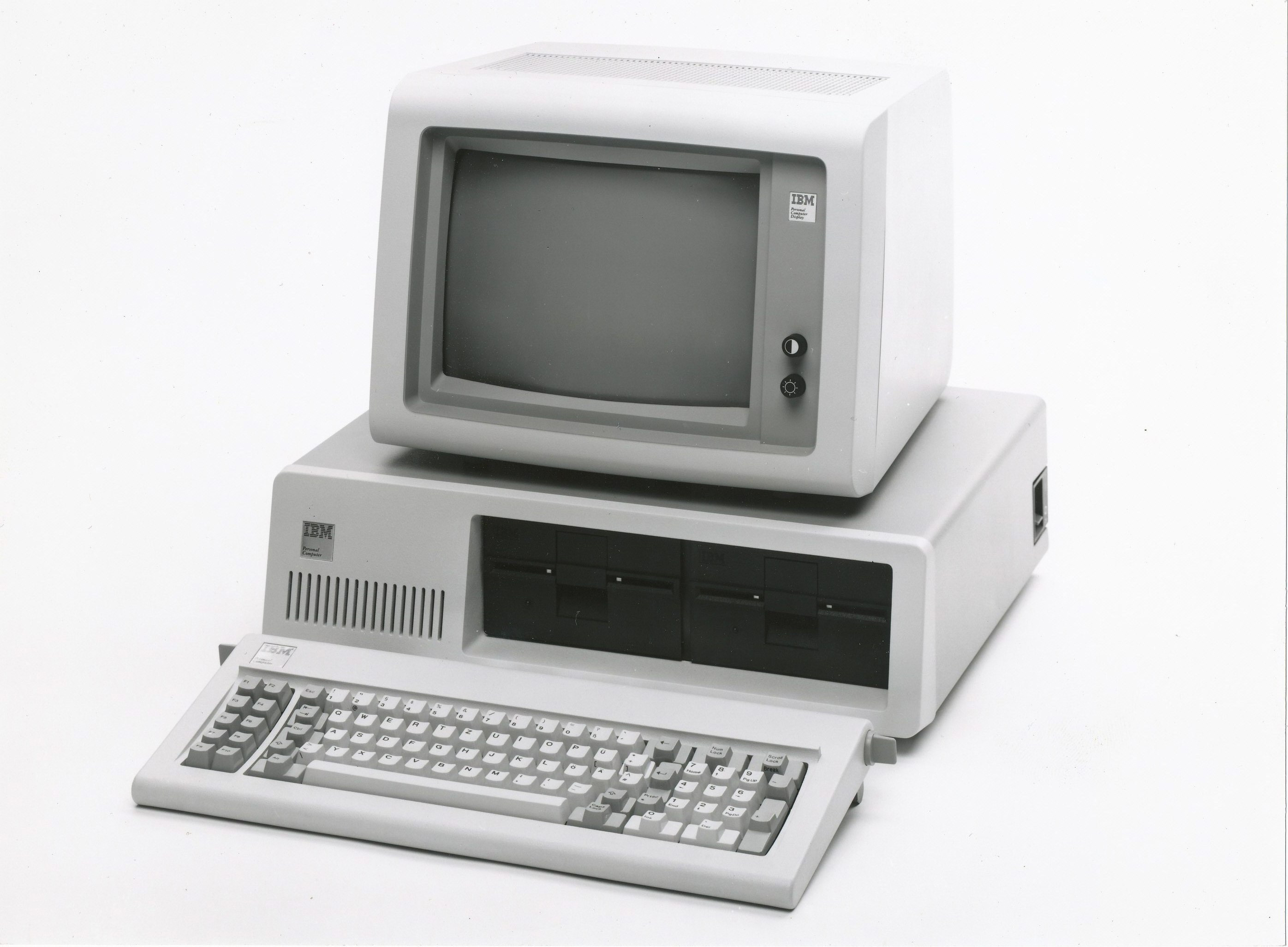
Personal computer IBM 51502
In those days, Intel's main customer was IBM, which dominated the PC market. Although IBM-compatible PCs drove home 8-bit computers out of the market, the Blue Giant was still losing ground. Compaq began to step on his heels, especially after the release of Intel's 80386 processor in 1985. The release of the Compaq Deskpro 386 the following year was a landmark event in the new IBM-compatible world. Now consumers have realized that the CPU inside the box means more than the logo glued to it. Moreover, single-handedly controlling the CPU manufacturing process, Intel realized that it had a trump card in its hands - and was ready to play it.
Don't talk about war
As the position of IBM weakened and Intel strengthened, the latter decided not to share with AMD details about its new treasure - the 80386th processor.
AMD considered this a violation of their current technology exchange agreement and asked the court to resolve the dispute in 1987. The war ended only 22 years later in 2009, when Intel paid $ 1.25 billion in final settlement. So forget about Apple versus Samsung - the 'Intel vs AMD' battle remains the gold standard due to the length of litigation. Interestingly, the founders of Intel and AMD worked at the same time at the pioneer chip company, Fairchild Semiconductor. After leaving Fairchild, Gordon Moore and Robert Noyce founded Intel in 1968, and Jerry Sanders founded AMD.
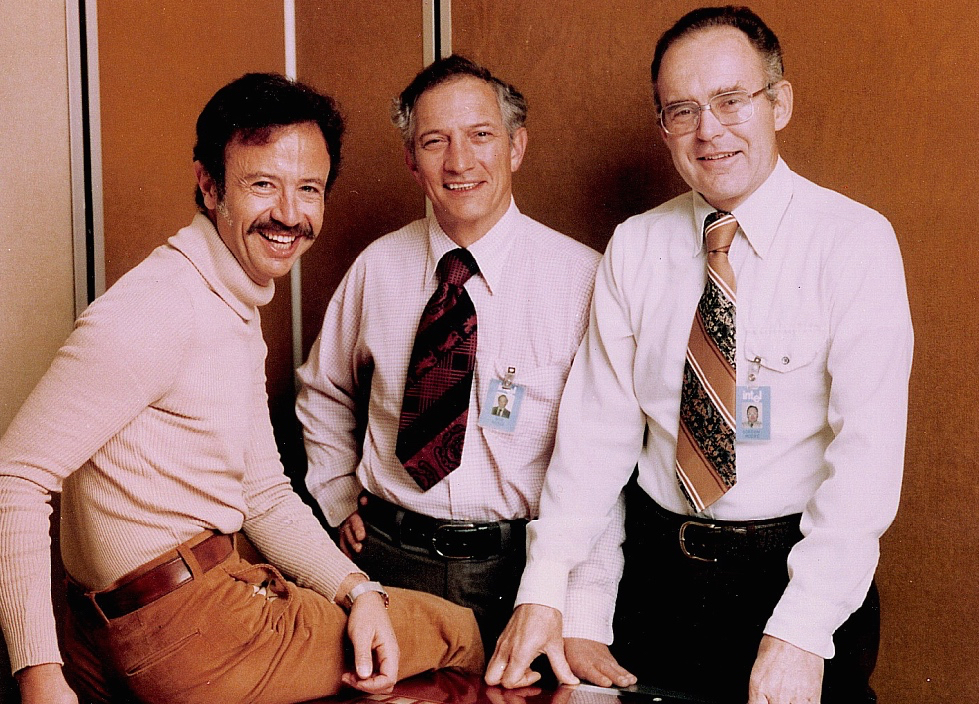
Intel founders (from left to right): Andrew Grove, Robert Noyce, and Gordon Moore (1978)
Intel Inside

The new design of the 80486 has brought about changes that have shaped the face of modern PCs. Version 486DX2, released in March 1992, received the first major update in addition to the embedded coprocessor and L1 cache. Now the clock speed of the CPU core does not depend on the front system bus, and thanks to the multiplication factor equal to two, the new 486DX2-40 and -50 chips can replace the old 5-volt CPUs, and thereby significantly increase the speed of the PC. The hugely popular 486DX2-66 appeared in August of the same year.

Intel 486DX2-66 processor crystal
Despite the launch of the new 5th generation Pentium processor in 1993, Intel did not stop production of 486 processors, and in early 1994 released the DX4 series. The L1 cache in the DX4-100 doubled, reaching 16 KB, and the clock frequency for the first time reached 100 MHz - the same figure was in the Pentium-100. In addition, the 80486 was the focus of the famous 'Intel Inside' marketing campaign launched in 1991.
Attack of the clones
The decision not to share the 80386 CPU technology with AMD gave Intel a free hand in the booming PC market. However, AMD considered that the previously concluded technology exchange agreement extends to the 80386, since it is a derivative of the 80286. So, through reverse engineering, AMD created its own 'Am386' chip. The process supposedly took 1.5 years, but due to legal problems, the chips did not reach store shelves until 1991. Nevertheless, the processors were successful because they were 40 MHz faster than the best CPU from Intel, which could only produce 33 MHz, and were also cheaper and consumed less power.
The first generation Am486 from AMD also followed the design of Intel processors. Manufactured in April 1993, the 'Am486DX' chips were models rated at 25, 33 and 40 MHz. The second generation, 'DX2', released the following year, were 50, 66 and 80 MHz chips. The latest generation of chips, the 'DX4', from 1995 represented the top performance with 120 MHz.
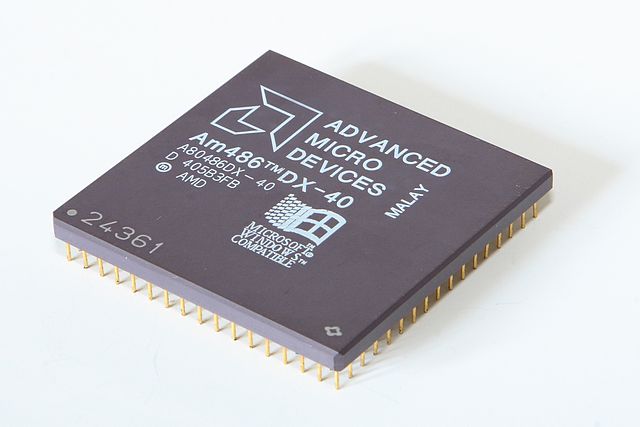
Am486 from AMD with performance similar to the original Intel CPU
However, the path of the 486 CPU from AMD to the consumer was not easy. AMD's arbitration lawsuit, originally filed in 1987, led to an 8-year legal battle between chip makers. Despite the fact that AMD managed to recapture the Am386 from Intel, the battle for the 80486 lasted until both sides agreed to a settlement agreement and AMD gained access to the microinstruction system of the Intel 486 processor. Presumably, this circumstance led to the emergence of two versions of the 486 processor from AMD: the first mimicked Intel microcode, the second used the AMD microinstruction system through a process called 'clean room design'. For Intel, it was more important that the settlement agreement confirmed that the 80486 was the last processor AMD cloned.
Meet - Cyrix
On the other hand, the newly-minted Cyrix company, which at that time specialized in coprocessor chips for 80286/386 systems, became interested in 486 CPUs. Cyrix was a chip maker with no manufacturing facilities of its own. For the manufacture of processors, he used SGS-Thomson (now ST Microelectronics), Texas Instruments and IBM. The first versions of the 80486 chip from Cyrix appeared under the code name 486SLC / DLS in 1992 and were installed in the 80386 module. Due to the fact that PCs were much more expensive then than they are today, there was a great demand for products intended for those users. who wanted to keep the current system in order and simply upgrade the processor. However, the Cyrix 486xLC with 1 KB L1 cache and no FPU were not compatible with the original 486 processors from Intel. In 1993 Cyrix released the Cx486DX and DX2,and they looked more like Intel CPUs.

Cyrix486. Cyrix's first popular processor.
Nevertheless, manufacturers began to sue each other: Cyrix filed an antitrust lawsuit against Intel, and Intel accused Cyrix of patent infringement. In January 1994, thanks to ongoing contracts between Intel, chipmaker Texas Instruments, and SGS Thomson, Cyrix won a court case, while abandoning the antitrust lawsuit.
In the meantime, the arrival of the Intel Pentium in 1993 with a new CPU socket forced owners of 486 processors to look for alternatives. Inspired by the court's victory, Cyrix began specializing in products to improve CPU performance. Released in 1995, the 5x86 processor overclocked to 120 MHz and was a direct replacement for 486 systems operating at 3.3 volts. The Cyrix 5x86 processor was essentially a simplified, energy-efficient alternative to the Pentium based on the M1 core. The 5x86 performance level was comparable to the Pentium-75.

Cyrix crystal 486th CPU
After settling with Intel in 1995, AMD also began to successfully market PC upgrade components and released the Am5x86 in November of that year. It was a significantly improved 133MHz 80486 processor that offered double L1 cache and built-in X4 multiplier to run on the original DX board.
Unsurprisingly, after seeing AMD and Cyrix bargain with updated components, Intel pulled out its big gun and released the Pentium OverDrive in 1995. It was an improved Intel Pentium processor with a multiplier of 2.5 inside the 80486 module. It could run on board at 5 and 3.3 watts, and supported buses at 25 or 33 MHz. But due to the low speed - the maximum figure is only 83 MHz - and the high price, OverDrive chips were not widely used.
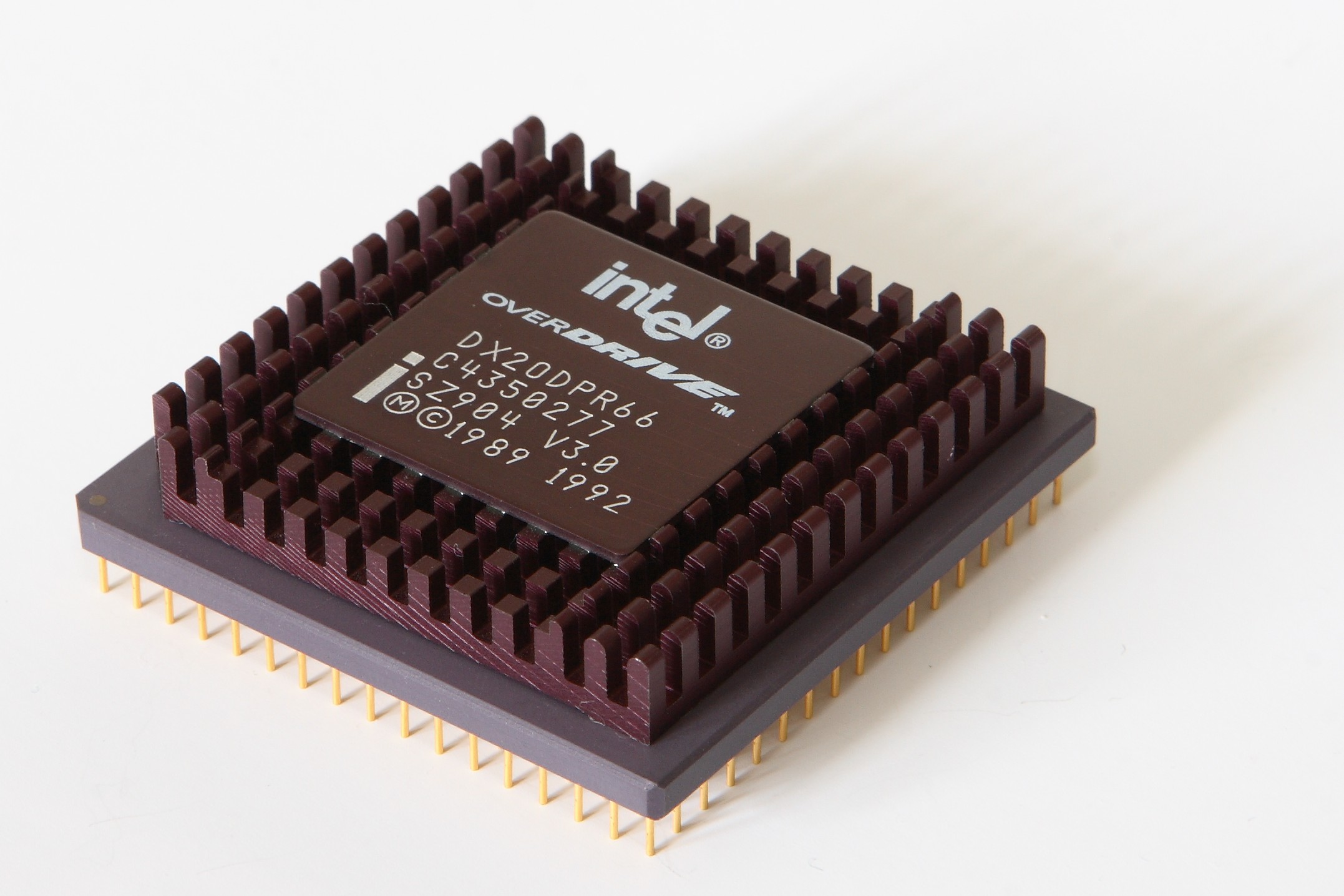
Intel created Overdrive as an upgrade for 486 systems
How many?
By today's standards, PCs manufactured in the early 90s were not cheap. A 486DX2-66-based computer with a VGA monitor, 4MB of RAM, a 320MB hard drive, and dual-speed CD-ROM from brands like Olivetti or Compaq sold for about $ 3,500. At the same time, a Pentium-133-based PC running Windows 95 in 1995 cost as much as $ 7,800.
However, one of IBM's most important consumer decisions regarding the personal computer concept was the permission from Microsoft and Intel to resell their own products to other brands. This meant that anyone with sufficient knowledge and courage could consider themselves a PC manufacturer. Many started out like that: one or two. These include well-known brands like Gateway and Dell. By purchasing components from smaller manufacturers, you could save up to 40%. That is, the price of a PC would have dropped from $ 3,000 to $ 1,800. Yes, even more functionality would be added.
486th today
So, how does our 80486th look 30 years later against the background of the current miracle chips? There is no doubt that the 486's performance at a million instructions per second is very modest, especially compared to AMD's current Ryzen Threadripper 3990X with 64 cores and a claimed 500 MIPS per core. Nevertheless, you can find a computer with similar performance to the 486th CPU on the market.
Remember at least STM32F103C8T6 - 32-bit Cortex-M3 microcontroller. It was designed by ARM, a company that makes CPUs for smartphones, and manufactured by ST Microelectronics. Its clock frequency is 72 MHz, and the speed is 1.25 MIPS. Often the Cortex-M3 is used in Arduino projects. It can be bought on Ebay for $ 5.
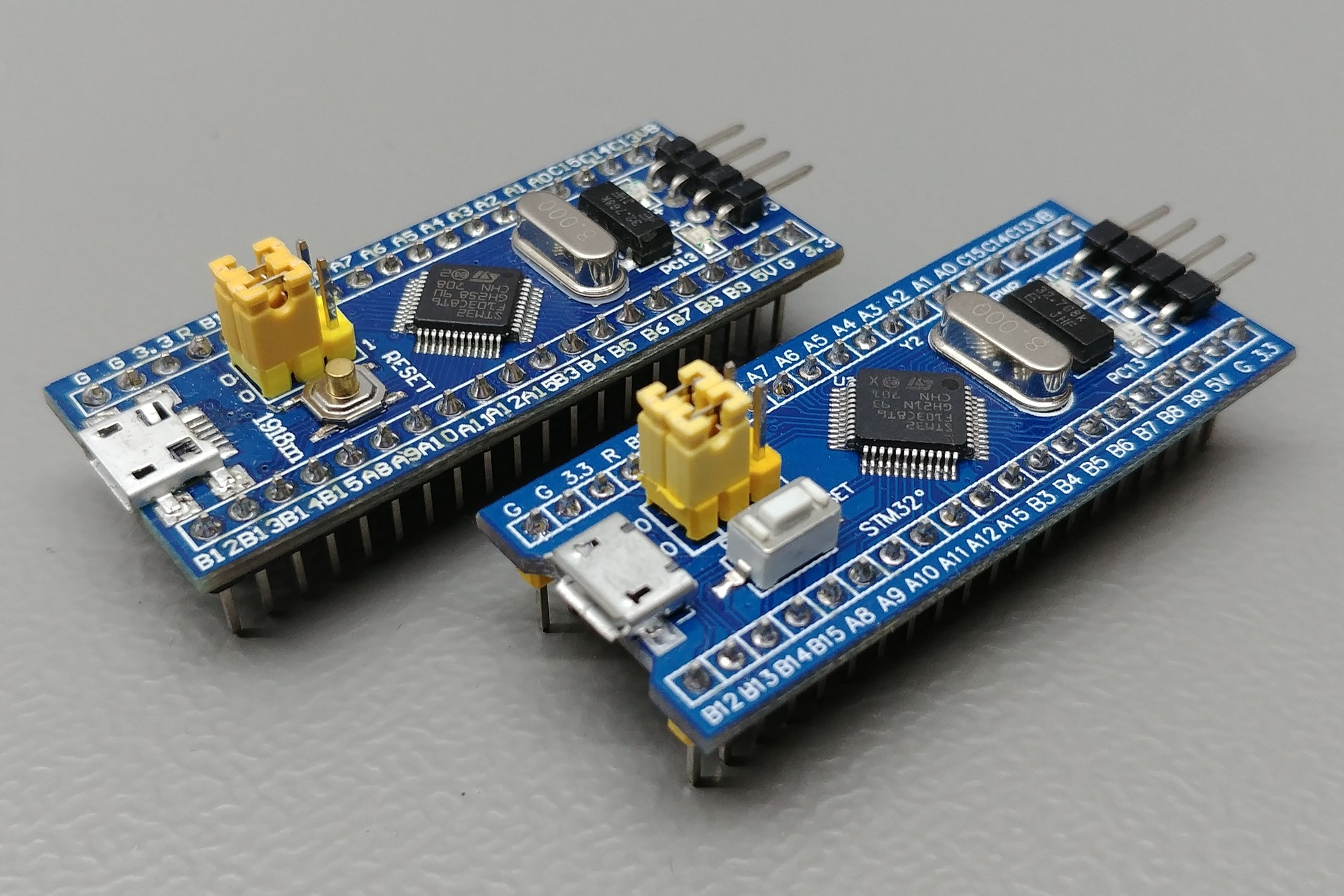
STM32F103 on $ 5 board is slightly faster than 80486
Heritage
With more than 70 different models in the arsenal made by Intel, AMD and Cyrix (excluding CPU versions from IBM, SGS-Thomson, Texas Instruments and other manufacturers), the 80486th can compete with the 8086th in terms of the number of varieties and modifications.
And yet, despite the huge number of twins and improved versions, production of the 80486s declined when the revolution called Windows 95 happened. Microsoft changed the concept of personal computers, and Intel became successful with the release of new Pentium processors.
As the Pentium grew in popularity, Intel began releasing 486s for industrial applications, only stopping production once in 2007, and thus paved the way for the rapidly growing embedded processor market.
Since then, more than one generation of processors has appeared and disappeared, but the legacy of the 80486th - the bus multiplier, built-in cache and FPU - are still alive today. Nice work, 80486th.